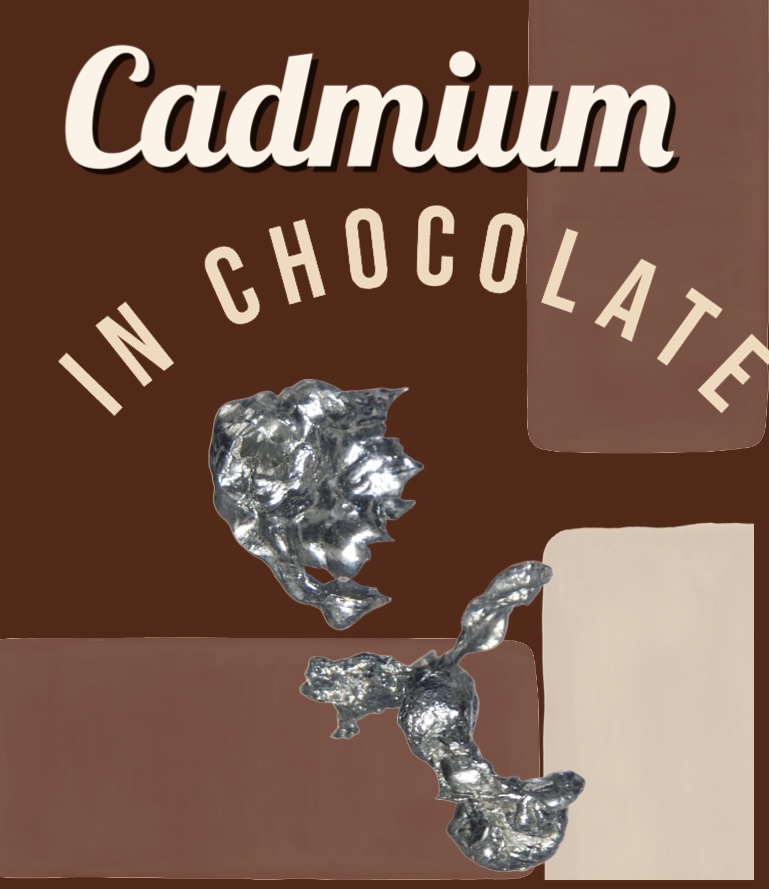 Like most chocolatiers we know a little science but I am definatly not a scientist so please dont just take my findings, visit some of the websites listed at the end of this post.
Like most chocolatiers we know a little science but I am definatly not a scientist so please dont just take my findings, visit some of the websites listed at the end of this post.
Cadmium, notorious for its harmful effects on human health, occurs naturally in the Earth's crust and can be absorbed by plants, eventually making its way into the food chain.
Recent studies have unveiled that cocoa plants, particularly in specific West African regions, have the ability to accumulate cadmium from the soil.
This has ignited a global discourse surrounding the safety of chocolate consumption and its potential repercussions on communities dependent on cocoa cultivation.
African Cocoa Farmers: Caught in the Crossfire:
Africa lies at the heart of the chocolate industry, producing the majority of the world's cocoa. Nations like Ivory Coast, Ghana, and Nigeria play pivotal roles in the global cocoa supply chain.
However, these regions are grappling with the pressing issue of cadmium contamination in their soil not to mention galamsey (illegal mining) and the heavy metals that leaves behind.
This presents a multidimensional challenge for African cocoa farmers, imperilling their health and economic well-being.
Health Concerns for Cocoa Farmers:
Cocoa farmers stand at the forefront of this challenge, constantly interacting with contaminated soil that exposes them to cadmium.
Extended exposure to cadmium has been linked to a range of health problems, including kidney dysfunction, bone diseases, and even cancer. Astonishingly, those who work tirelessly to bring the joy of chocolate to our lives find themselves facing potential health risks due to circumstances beyond their control.
Economic Impact:
In addition to health concerns, the presence of cadmium in cocoa poses an economic threat to African cocoa farmers. As international regulations and standards regarding cadmium levels in food products become more stringent, there's a growing risk of reduced demand for cocoa from regions with higher cadmium content. Consumers are becoming increasingly conscious of potential health risks associated with consuming such products.
Sustainable Solutions:
Addressing the cadmium conundrum necessitates a comprehensive approach that involves raising consumer awareness and supporting cocoa farmers. Initiatives focusing on soil management, crop rotation, and innovative farming techniques can help mitigate cadmium uptake by cocoa plants. Furthermore, advocating for fair trade practices and equitable prices for cocoa can significantly improve the lives of African cocoa farmers.
Consumer Consciousness:
Consumers wield the power to drive change through their choices. By demanding transparency in supply chains and favoring brands committed to responsible sourcing, we can prompt the chocolate industry to take proactive steps toward minimizing cadmium levels in cocoa products. Our collective voice can make a profound impact, not only enhancing the quality of our chocolate but also safeguarding the well-being of cocoa farmers.
Conclusion:
The issue of cadmium in chocolate gives rise to intricate ethical, health, and economic concerns. As we relish the pleasures of chocolate, it's essential to acknowledge the individuals who dedicate their lives to its creation. African cocoa farmers, already confronting numerous challenges, deserve our unwavering support and attention as the industry grapples with the cadmium dilemma. Through collaborative efforts, we can ensure that the joy of chocolate is accompanied by a commitment to safety and sustainability for all.
Scientific and trade Websites for Extra Information:
World cocoa foundation: https://www.worldcocoafoundation.org/blog/the-impacts-of-new-eu-cadmium-regulations-on-the-cocoa-supply-chain/
1. Food and Agriculture Organisation of the United Nations: http://www.fao.org/
2. World Health Organisation: https://www.who.int/
3. International Journal of Environmental Research and Public Health: https://www.mdpi.com/journal/ijerph
4. Environmental Science & Technology: https://pubs.acs.org/journal/esthag
5. Journal of Agricultural and Food Chemistry: https://pubs.acs.org/journal/jafcau
6. European Food Safety Authority: https://www.efsa.europa.eu/
7. United States Food and Drug Administration: https://www.fda.gov/
8. National Center for Biotechnology Information: https://www.ncbi.nlm.nih.gov/
Remember to critically assess the credibility and reliability of the information from these sources. This collection of scientific websites offers a wealth of insights into cadmium in chocolate and its implications for African cocoa farmers.
